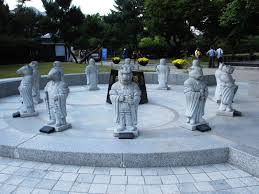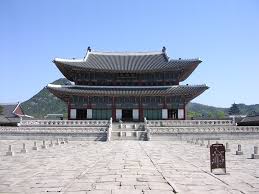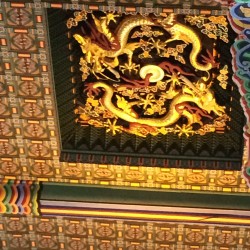In the beginning, the twelve gods of the earth, the Sibijisin, the animal guardians, are said to have established their pecking order by a swimming race. According to some, unbeknownst to the Ox, the Rat jumped up on his back and upon approaching the bank of the river, jumped off ahead of the Ox and won first place. Others say that the Ox kindly offered the Rat the ride. Although there are other versions to this story, visualizing this one was so much fun. So this is the one I’m perpetuating.
As a result, the order of the animals is Rat, Ox, Tiger, Rabbit, Dragon, Snake, Horse, Sheep, Monkey, Rooster, Dog and lastly, Pig. Each year is represented by an animal so every twelve years the order is repeated. We were delighted to see this sculpted homage to the zodiac just outside the museum on the Gyeongbokgung Palace grounds.
It turns out I married a dragon. The character traits of a dragon are just as my 47 years of experience have shown me. They are complex, dominant and ambitious. They are eccentric and prefer to live by their own rules. They’re unafraid of challenges and willing to take risks. They frequently help others, but rarely ask for help. They’re passionate. So if you’re considering sharing your life with a dragon, hold onto your hat!
2016 is the Korean Year of the Monkey. Monkey attributes include being talented, clever and inventive and able to solve problems with ease. They are the ultimate diplomats. So, if you have an new family member scheduled to arrive in 2016, be prepared. You might be nurturing a future politician. So…..does that mean that during the Year of the Monkey all the rest of us may be influenced to be more creative, more clever and more diplomatic? That would be lovely!






